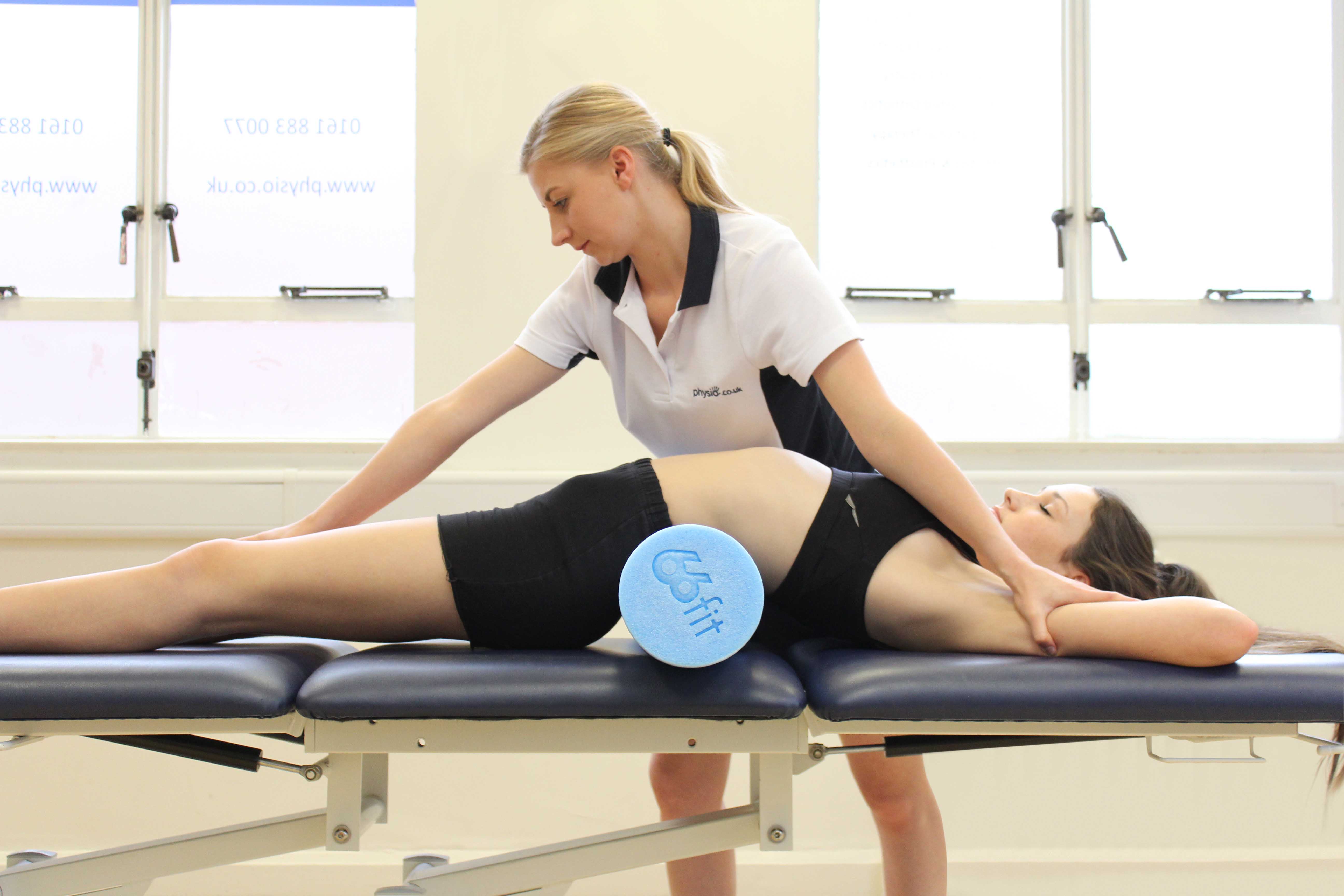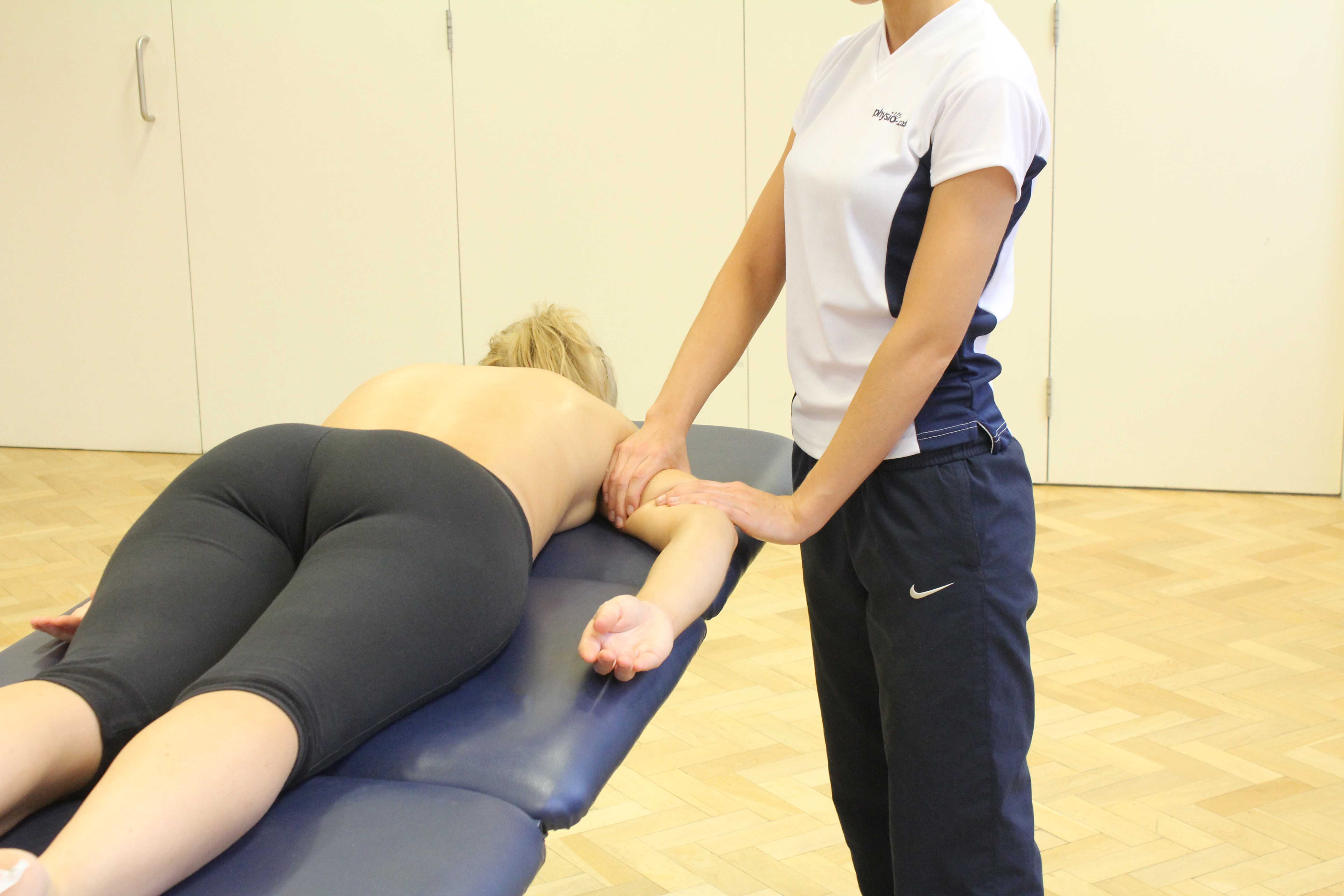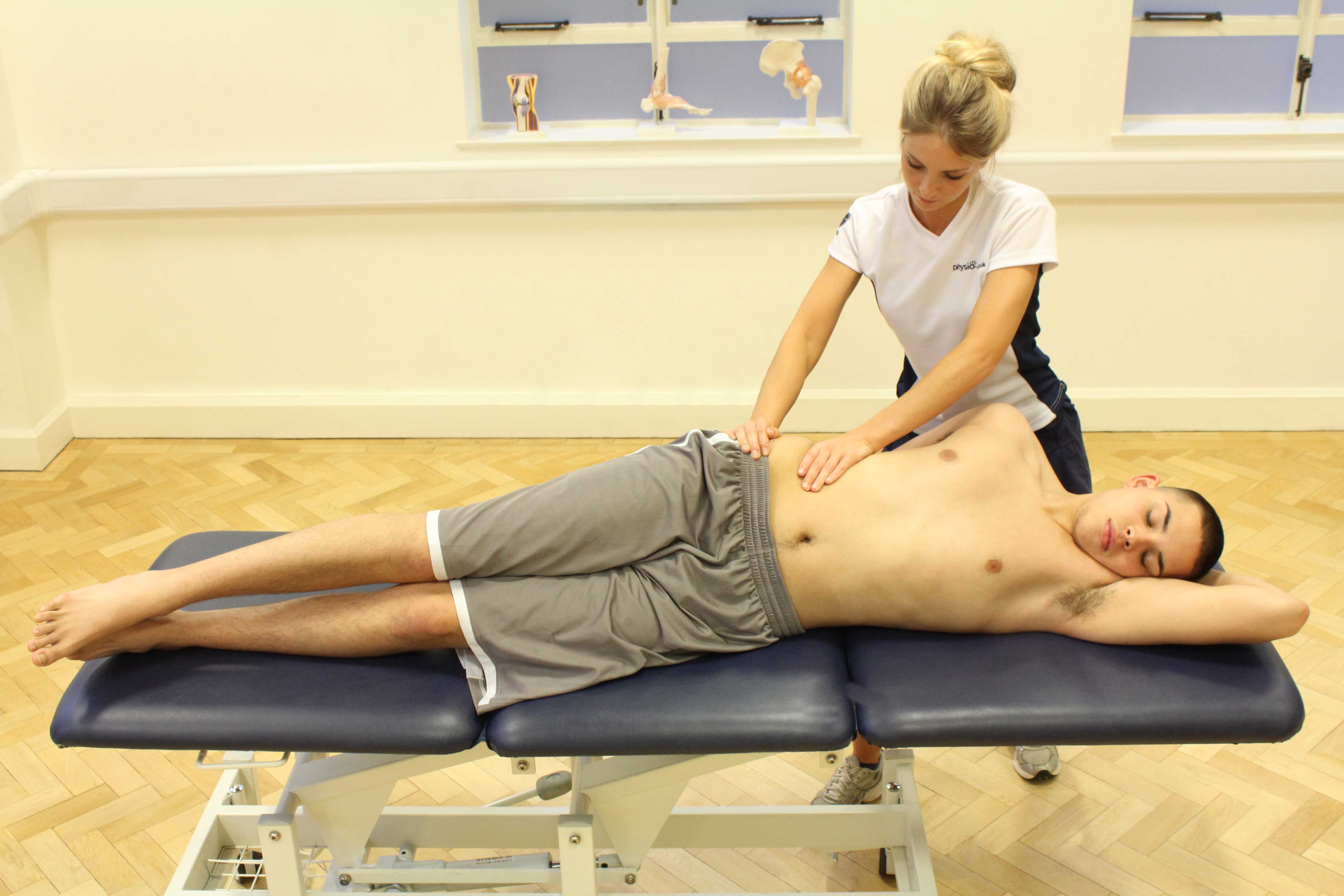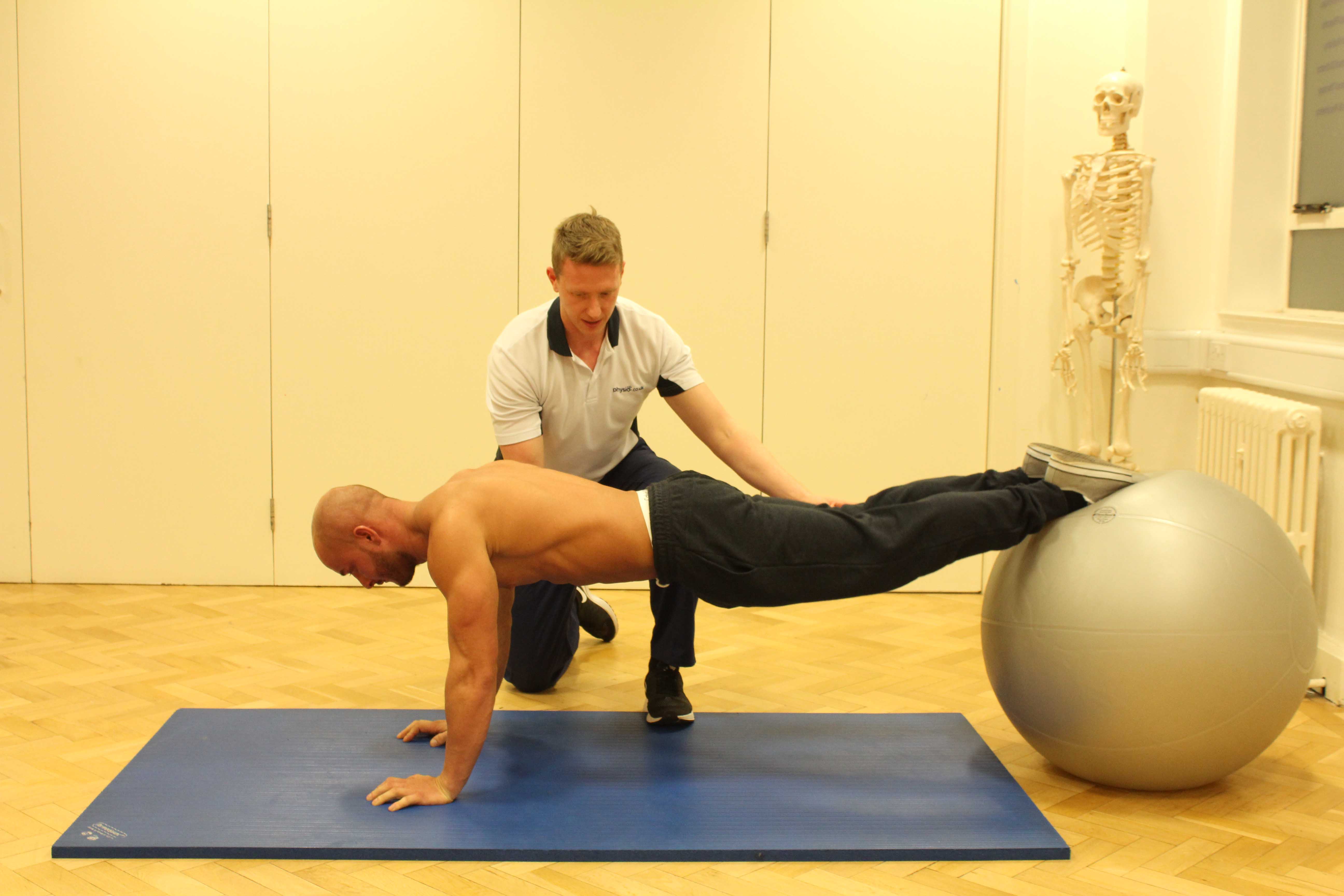Radial Head Replacement
A radial head replacement is a surgical procedure whereby the injured or damaged radial head is replaced with an artificial joint. Radial head replacement is most commonly performed for degenerative diseases such as osteoarthritis or rheumatoid arthritis and is also performed as a treatment for severe injuries such as a fracture of the radial head. Physiotherapy plays a crucial role in rehabilitation and recovery following total elbow replacement.
The radial head is shaped like a round disc and is important in motion of the elbow. The radial head moves both in flexion (bending) and extension (straightening) of the elbow joint, as well as pronation and supination (rotation) of the forearm. Injury or damage to the radial head can affect all movements of the elbow. The main indications for radial head replacement surgery are:
- Radial head fracture
- Arthritis
Radial Head Fracture
One of the indications for radial head replacements is to treat a severe radial head fracture. A radial head fracture is most commonly caused by a fall onto an outstretched hand. Radial head replacement can provide relief from symptoms resulting from radial head fractures including pain, swelling, and stiffness as well as preventing the fracture causing significantly reduced movement and function at the elbow joint.
Treatment of a fracture to the radial head depends on the severity of the damage. If the radial head is non displaced (remains in position) then a more conservative approach such as immobilisation followed by physiotherapy may be recommended. If the radial head fracture is displaced (out of position) following trauma then ORIF elbow may be required to reposition and stabilise the joints using screws or pins. In severe cases where the fracture is displaced (out of position) or comminuted (3 or more fragments of bone) and when the radial head has been irreversibly damaged, radial head excision surgery will be necessary. After the radial head has been removed it is recommended that the bone is replaced with an artificial implant to help regain stability and to achieve full or near to full function in the elbow joint.
Arthritis
A variety of arthritic conditions are major indicators for radial head replacement. The end of the radial head is covered with articular cartilage which helps the radius glide smoothly and efficiently with the other bones that make up the elbow joint during movement. However, the cartilage can get damaged as a result of arthritis of the elbow joint. Damage to the articular cartilage causes the joint to become very painful and stiff. These symptoms lead to reduced mobility and function in the elbow. Radial head replacement following radial head excision is effective in relieving symptoms including pain, stiffness and reduced function in the elbow joint caused by damage to the articular cartilage.
 Above: Strengthening exercises for the muscles and connective tissue around the elbow
Above: Strengthening exercises for the muscles and connective tissue around the elbowSurgical procedure for radial head replacement
Radial head replacement surgery will take place under general anaesthesia. Once under anaesthesia, the surgeon will make an incision on the outside (lateral) of the elbow joint. After making the incision, the surgeon will then move the tendons and ligaments out of the way to expose the radial head. Once the radial head has been located, the surgeon will remove (excise) the damaged bone. The artificial implant consists of a replicate head that is attached to a long metal stem. A hollow hole is then made into the remaining part of the radius and the metal stem of the artificial implant is placed into the hollow space and then fixed and cemented into place either using specialised surgical cement. Another way of fixing the replacement part is to use an un-cemented prosthesis that has a fine mesh of holes on the surface. Over time, the bone will grow into the mesh, anchoring the prosthesis to the bone. Once the artificial parts are fixed into place and the hinged ends are put together, the surgeon will check for proper fit and motion and then the incision is closed up using stitches or sutures.
Physiotherapy after radial head replacement surgery is essential to ensure the success of the surgery, prevent the likelihood of any problems occurring in the future and to help regain full or near to full strength, stability and function in the elbow joint.
 Above: Passive stretches and mobilisations of the elbow by MSK therapist
Above: Passive stretches and mobilisations of the elbow by MSK therapistSymptoms after radial head replacement surgery
After your radial head replacement surgery, you will experience pain, discomfort, and significant swelling in and around your elbow joint. After the surgery your elbow will be covered by a thick bandage. You will be given pain modalities to control the pain. You will be advised to keep your elbow elevated above chest level for several days to avoid excessive swelling and throbbing. You can keep it propped up on a stack of pillows when sleeping or sitting. Physiotherapy will begin immediately after your radial head replacement surgery to maintain range of movement and reduce stiffness in your elbow joint. After the initial period of recovery, you will be given a sling to use for essential support and protection during everyday tasks. You will be unable to drive after the surgery until you have full and painless range of movement in your arm.
Physiotherapy after radial head replacement surgery
It is essential to undergo a comprehensive rehabilitation course as soon as possible following your radial head replacement surgery. Physiotherapy will help maximise the success of the surgery, prevent any problems occurring and help you regain full or near to full function in your elbow joint. It is important to regain as much function as possible in your elbow joint so as to preserve efficient function in your forearm and hand to be able to complete general everyday tasks. The main goals of your rehabilitation with Physio.co.uk include:
- To restore a pain-free elbow joint
- To restore full range of motion (ROM)
- To restore full muscle strength and length
- To improve cardiovascular fitness and muscle endurance
- To re-establish independence with daily tasks
- To promote recovery and quality of life
1-4 weeks
During the initial stages of your rehabilitation after radial head replacement surgery the goals of your physiotherapy programme will focus on controlling pain and swelling that you will be experiencing. Your physiotherapy programme with Physio.co.uk will also aim to and maintain as much range of movement as possible to reduce stiffness and improve mobility in your elbow joint. Physio.co.uk will also include gentle strengthening exercises for the muscles of your affected arm as well as muscles in your opposite arm. Your physiotherapy will include:
- Cryotherapy (Ice)
- Elevation and compression
- Pain modalities
- Passive range of movement exercises
- Strengthening and stretching exercises for wrist, shoulder and unaffected arm for support.
- Gentle mobility and strengthening exercises for muscles around elbow joint (biceps, triceps etc)
5-8 weeks
After a month of rehabilitation following your radial head replacement surgery your physiotherapy will continue to focus on controlling any pain and swelling you are still experiencing as well as progressing activities from previous weeks. The goals of your physiotherapy at this stage include improving range of movement, increasing strength and increasing flexibility in your elbow joint. Emphasis is given to exercises that aim to improve function at the radial head, therefore it is important to improve twisting of the forearm i.e. pronation and supination. Your physiotherapy at this stage will also include exercises that aim to improve function in your hand, wrist, shoulder and opposite arm as well as including some cardiovascular exercises to help improve your fitness. Your physiotherapy will include:
- Continuation of modalities to control pain and swelling (if applicable)
- Active range of movement exercises (bending, straightening and twisting elbow joint)
- Active strengthening exercises for muscles in and around elbow
- Strengthening, stretching and range of movement exercises for wrist and hand
- Strengthening, stretching and range of movement exercises for shoulder
- Activities for opposite arm
- Arm cycle
- Hydrotherapy
 Above: Strengthening exercises for the muscles and connective tissue around the elbow
Above: Strengthening exercises for the muscles and connective tissue around the elbow9-12 weeks
After successful physiotherapy, you will have seen marked improvements in the function of your elbow joint and arm by the third month. You will not be experiencing any pain or swelling in your elbow at this stage. The goals of your physiotherapy with Physio.co.uk will continue to focus on regaining the full function and strength in your elbow and arm. It is also necessary to continue exercises that aim to improve the strength and range of movement in your wrist, hand and shoulder of your affected arm for extra support and to maximise function. Additionally, Physio.co.uk will now aim to increase your cardiovascular fitness and muscle endurance to further maximise the function in your elbow joint. Your physiotherapy will include:
- Continuation of range of movement and stretching exercises from previous weeks
- Continuation of strength training for muscles in wrist, shoulder and unaffected arm
- Emphasis on strength training and progressive resistance exercises for muscles around elbow
- Static arm cycle
- Hydrotherapy
- Function activities relative to job, hobby or sport
- Emphasis on independent home exercises
 Above: Client educated about their elbow condition by MSK therapist
Above: Client educated about their elbow condition by MSK therapistSummary
A radial head replacement is a surgical procedure whereby the injured or damaged radial head is replaced with an artificial joint. Radial head replacement is required in severe cases when treating conditions such as inflammatory arthritis as well as treating injuries that have resulted from trauma such as radial head fracture. It is essential to undergo radial head replacement to improve function and to significantly relieve symptoms such as pain and swelling that result from problems within the elbow joint. After radial head replacement, a comprehensive physiotherapy programme with Physio.co.uk is crucial to ensure the success of the surgery, prevent the likelihood of any future problems and to help you achieve the return of full or near to full function within the elbow joint. A physiotherapy programme with Physio.co.uk offers the return of symptom free, full or near to full function in the elbow joint. Commitment to a personal physiotherapy programme with Physio.co.uk will allow a more rapid return to everyday activities, work, hobbies, and sport. Call Physio.co.uk now on 0330 088 7800 for more information or to book an appointment please contact us.

 0330 088 7800
0330 088 7800





































